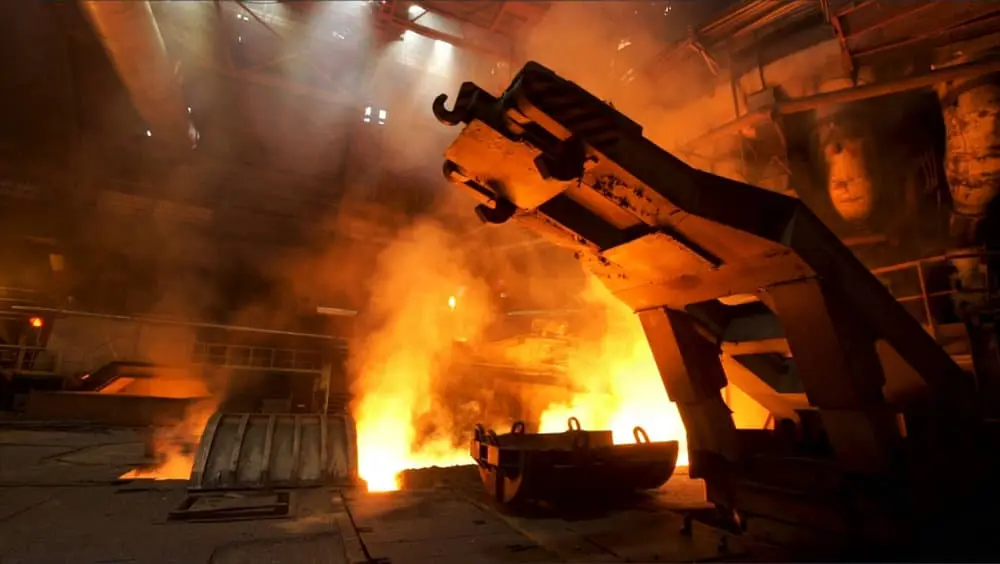
فرن الصهر هو فرن متخصص يستخدم لصهر الخامات المختلفة, خام الحديد في المقام الأول, لإنتاج المعادن الفولاذية وغير الحديدية. فيما يلي بعض الأنواع الشائعة من أفران الصهر ووظائفها المحددة.
فرن الانفجار
طلب: يستخدم على نطاق واسع للصهر الخشن للمعادن مثل النحاس, يقود, الرصاص بيننك, و Antimony.
بناء: يضم قمة الفرن, جسم الفرن, السرير الرئيسي (أو الحلق), أسطوانة الفرن, وجهاز tuyere.
وظيفة: مواد صلبة بما في ذلك رسوم الصهر (يركز, خام الملبد), فحم الكوك, تدفق, وتضاف المواد المضادة من الأعلى. يتم تفجير الهواء عالي الضغط في tuyere, بدء ذوبان, أكسدة, تخفيض, والتفاعلات الكيميائية مع تحرك المواد لأعلى. المعدن السائل, غير لامع, ويتم تفريغ الخبث من قاع الفرن, بينما يتم طرد الغازات وأكاسيد المعادن من خلال المخرج العلوي.
Kaldo Furnace
الاسم المستعار: المحول المنفجر المائل للأكسجين.
سمات: يعزز جسم الفرن المائل والدوار التلامس بين المعدن السائل والخبث, تحسين كفاءة التفاعل.
عوامل التلف الحرارية: على غرار فرن ISA (فرن Ausmelt).
أكسجين قاع فرن صهر الرصاص
بناء: مفاعل أسطواني أفقي مصمم لصهر الرصاص الفعال.
فرن التطاير
طلب: فرن دوار يستخدم لعلاج الخبث المربى واستعادة المعادن القيمة مثل Zn, PB, في, و GE.
سمات: يمكن أن تصل درجة الحرارة في منطقة التفاعل المتقطعة إلى 1300-1500 ℃.
فرن فلاش
طلب: المعدات الأساسية للتخلص من الفلاش في العمليات المعدنية غير الحديدية.
سمات: كفاءة إنتاج عالية وانخفاض استهلاك الطاقة, مع تركيز عالي So₂ في غاز المداخن.
بناء: يتألف من برج رد الفعل, خزان الترسيب, المداخن الرأسية, وفوهة.
وظيفة: يتم خلط تركيز المسحوق المجفف بالهواء الساخن أو الأكسجين في الفوهة ويتم حقنه بسرعة عالية (60-70 م/ث) في برج التفاعل, حيث تحدث عمليات الصهر بسرعة (في غضون 2-3 ثوان). تسقط الكبريتيد المنصهر والأكسيد المنصهر في خزان الترسيب لمزيد من المعالجة.
الفرن الكهربائي
طلب: تستخدم للصهر, التدفئة, والمعالجة الحرارية للصلب, Ferroalloys, والمعادن غير الحديدية.
تصنيف: يشمل أفران المقاومة, أفران التعريفي, أفران القوس, أفران البلازما, وأفران شعاع الإلكترون.
وظيفة: الأفران الكهربائية ضرورية للتجفيف, تحميص, تكرير, ذوبان, العزل, وعلاج الخبث في صهر المعادن غير الحديدية.
- فرن الحث: يستخدم تأثير التدفئة الحث, مثالي للتدفئة وذوبان الصلب, نحاس, الألومنيوم, والزنك. يتميز بالتدفئة السريعة وفقدان المواد المنخفضة, مما يجعلها مناسبة لخطوط الإنتاج التلقائية.
- فرن قوس: توظف الآثار الحرارية للقوس للذوبان; يمكن تصنيفه إلى غير مباشر, مباشر, وأفران قوس مغمورة.
- مكنسة فرن قوس: متخصص في ذوبان المعادن التفاعلية والحرارية مثل التيتانيوم, الموليبدينوم, و niobium.
- بلازما فرن: يستخدم غاز العمل المؤين لتوليد البلازما للتدفئة أو مواد الذوبان.
في ملخص, يتم استخدام أنواع مختلفة من أفران الصهر في صهر المعادن, كل مصمم بهياكل محددة, مبادئ, والتطبيقات. يتطلب اختيار فرن الصهر المناسب دراسة متأنية لنوع المعدن, مقياس الإنتاج, استهلاك الطاقة, والتأثير البيئي.







